By Steven Edholm
I used to be so confused about lime. Some limes have more than one name and more than one use which can be difficult to keep sorted out in your head when you have no frame of reference. Lime is super neat though, and worth understanding. I’ll attempt here to present the types of lime and their uses in a way that is accessible to people without that frame of reference… or maybe offer an accessible frame of reference for understanding lime. For more on lime burning and the lime cycle see The lime squad I and Lime Squad II posts on the Turkeysong blog.
First off, lime is cool, and so useful! Understanding what uses there are for lime can help us understand the three basic forms of lime that we might have access to or make. The basic use groups are these.
Reactive uses: use the caustic nature of limes to chemically attack plant and animal substances in food processing and tanning of skins. In other reactive uses, lime reacts chemically with other elements as in dyeing or to potentiate the drug alkaloids found in Coca leaves and Betel nut.
Plastic uses: These are used for building, painting and in the arts. the lime is shaped it how we want it before it dries and hardens.
Agricultural uses: Used to adjust soil acidity into a range suitable for most plant growth, as well as to provide calcium.
Nutritional uses: as a calcium supplement.
Filler uses: Powder used as a filler in the arts for painting and sizing.
Fluxing: Used to lower the melting temperature of unwanted materials during smelting of metals.
Thats enough basic uses for us to tackle in this short article about understanding the different forms of lime. In future articles, I may address each use group more specifically to cement that understanding.
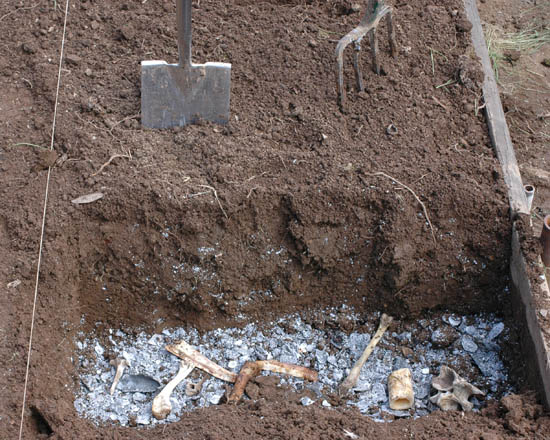
Shells in a garden trench being prepared for a perennial planting. Fiinely ground shells or limestone are more useful due to a larger surface area. By the way, bones (also seen in the trench) do have quite a bit of calcium, but are not used in the production of lime. They are more useful as a source of phosphorous.
All lime comes from biological processes! Wow! that’s amazing. All those billions of tons of limestone, chalk, marble, shells, coral and all that stuff was collected from the environment by living organisms. When the organisms died they left deposits of their calcium rich shells which have changed form over time. That’s humbling.
Lime can exist in three basic forms in a simple “cycle”. The lime can change from one form to the next in this cycle, and back again. The basic material is calcium with variations in what is and isn’t attached to it. We start the cycle at limestone.
Limestone: Limestone, shells, marble, chalk etc…. there are various forms of limestone, but they are all basically the same material. One type contains a lot of Magnesium in a similar form and we call that Dolomite lime. Dolomite’s uses are similar to regular limestone. The limestone form, including shells of all kinds, is Calcium Carbonate. It is calcium with 3 carbon atoms attached to it. You know, carbon as in carbon dioxide the famous greenhouse gas. We are all familiar enough to know what stone and shell are like. They are hard and tough. Maybe more important to understand is that they are not really reactive. We can throw rocks and shells in water and they just sit there. The take home message is that they are stable so they resist the elements. Calcium Carbonate is the most natural and common form of lime and the one that other forms of lime will naturally turn into if exposed to the environment.
Quicklime: If we take our Limestone rocks or shells and heat them up to a red heat, we drive off the carbon completely replacing those three carbon atoms with one oxygen atom to make CaO (calcium oxide) one calcium to one Oxygen. If you’re starting to get nervous about all that chemistry crap, never mind the chemistry. The important thing to know is that the burned lime is highly unstable and very quick indeed to react to moisture. Unless stored in a completely sealed container, it will quickly begin to react with the elements of the environment and start the process of turning back into limestone. Quicklime is so unstable (and unsafe to have around) that it should be slaked processed into the next form) as soon as possible, preferably right after burning. Quicklime is very light in weight without those carbon molecules which are now floating around in the environment somewhere as greenhouse gasses. It is also thirsty for water which it can pick up from even the little bit in the atmosphere. If left out, quicklime will usually absorb moisture from the air, often falling into a pile of fine powder which brings us to our next stage of the cycle…
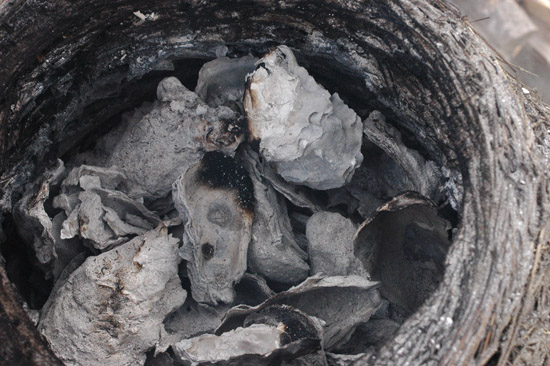
Burned shell or limestone is called quicklime. Quicklime is highly unstable and reacts quickly when exposed to moisture from which it rapidly consumes hydrogen.
Hydrated lime and lime putty: When water is added to the thirsty quicklime, it absorbs H2O molecules rapidly forming Calcium Hydroxide. One Calcium, two Oxygen and two Hydrogen. In this process heat is given off and the mixture can even boil violently. There are a couple forms of calcium hydroxide. If the calcium hydroxide is made in the form of a putty with excess water and stored in this wet state, it is known as lime putty. Lime putty is the most reactive form of calcium hydroxide, and the most stable way to store it. Lime putty is completely safe from conversion into limestone, as long as it is kept wet with no exposure to the air. More commonly, Calcium hydroxide is found in the form of a fine powder known as builders lime, type S or hydrated lime. This powder of lime is often used in tanning and building because it is convenient to store and sell in the dry form, but it is less stable because a portion of it will turn back into the limestone form with exposure to air, which also makes it less reactive. Don’t worry if you are getting confused already, we are going to drive home this information with practical examples and if you ever use lime, you will begin to form a context for understanding and remembering the different forms.
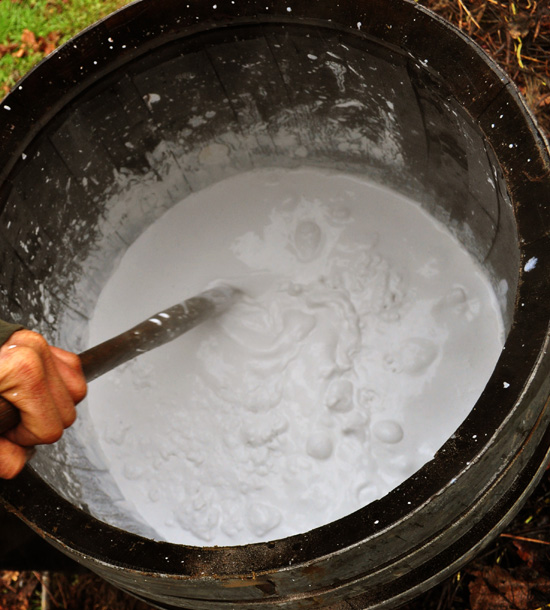
Slaking quicklime in a barrel. Note the bubbles, this is actually boiling from the violent reaction it can undergo when water is made available to the thirsty lime.
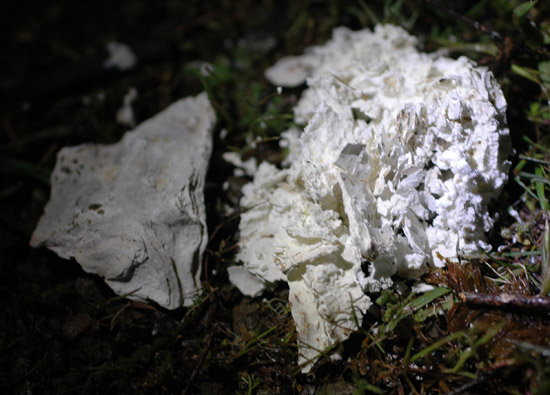
The half of the burnt shell on the right has had moisture added to it, and has fallen into a powder making hydrated lime. Quicklime is not ground and will usually slake to powder eventually if just left exposed to the moisture in the air.
So there are the three forms of lime, but to close the cycle the last form, calcium hydroxide or hydrated lime, has to turn back into limestone. This process is simple and we hinted at it already. When the lime putty is dried it absorbs carbon from the air turning back into limestone. In the case of hydrated, or powdered lime, the powdered lime is wetted first and then absorbs carbon as it dries, though it doesn’t carbonate as thoroughly as lime putty. You might be getting the idea that I’m partial to the lime putty form rather than the powdered form, and you’re right, but the powdered form is useful too and often what is available. More on that later…
BURN
*So, we have gone from limestone rocks or shells which we heated up to drive off carbon causing the atmosphere to warm up, killing the planet.
SLAKE
*Then we added water to the resulting thirsty quicklime which boiled violently or fell into a fine powder depending on how much water was added.
CURE
*Then we let the spreadable, wet lime putty, or hydrated lime paste , dry slowly. As the lime dries is reabsorbs carbon from the air saving the planet form carbon dioxide poisoning and forming limestone again.
We can use lime at these various stages for different purposes. There are so many different uses for lime, that we’ll defer most of that discussion for another time, but here are the characteristics of each type of lime discussed in the context of some common uses.
Limestone, Shells, Etc: (Calcium Carbonate). Having been stabilized by the absorption of Carbon dioxide, Limestone, shell, marble etc.. are basically stone as we commonly think of it. The stone can be used for building and paving of course. Limestone and shell can also be used in agriculture in a powdered form, and while other forms of lime can be applied to the soil as well, it is usually the carbonate form that is used. Lime increases the ph of soils by buffering soil acidity. Calcium Carbonate is fairly stable and non-reactive, but acids, like Carbonic acid naturally found in the ground, slowly dissolve the lime in the soil which is washed out by rains. Lime, usually as ground shell, can also be used as a nutritional supplement and in animal feeds, particularly to provide a source of calcium for chickens ensuring strong eggshells.
Quicklime: Quicklime is dangerous to handle and store because it is highly reactive. It heats rapidly and undergoes a violent reaction when water is applied. This process is called slaking. If the water is applied slowly and in measured quantity, the quicklime will fall into a very fine powder of hydrated lime. If it is slaked with more water, the water may boil and spit hot lime putty and caustic alkaline solution all over the place. It also expands a great deal during slaking, which is sometimes taken advantage of in building. By using the still expanding quicklime to mortar walls, the lime, sand mixture is forced into all crevices in the stone. Quicklimes uses in the arts are actually minimal. The most common use of quicklime is probably as a flux in smelting metals, though it is often added in the calcuim carbonate form as shells in primitive smelting, which then cook into quicklime in the smelter.
Hydrated lime and lime putty (Calcium Hydroxide): This is the form of lime with the most uses in arts, trades and cooking. It is chemically reactive, alkaline and caustic. Being highly alkaline, it modifies or attacks other materials like some proteins and cellulose, making it very useful. it also reacts with fats to form soluble soaps. When it dries it turns back into limestone as we said, which is non-reactive except with acids. Calcium hydroxide can be used to prepare skins for tanning by attacking certain proteins to release the hair from the skin, and dissolving various substances in the skin fiber which can then be removed by washing. It can also be used to process corn to make it more digestible in a process called nixtamalization (for more on which see this excellent page on corn processing and tortillas). There are many many uses for Calcium Hydroxide.
- Type S or Hydrated Lime (aka, builders lime): is a fine powder form of calcium hydroxide. Hydrated lime is convenient to store and ship, but is not as reactive as lime putty and makes a relatively poor material for building purposes (even though it is often called builder’s lime which says more about our building ethic than anything else). It’s convenient form however makes it the most common form of Calcium Hydroxide and it is perfectly fine for some uses like preparing skins and nixtimalizing corn.
- Lime Putty: Lime putty will keep indefinitely if stored with a thin layer of water over it and can even improve over time. Some lime putty is stored for years to make fine quality limes for exacting uses such as fresco paintings. It is the most caustic form of Calcium Hydroxide and should be the first choice for building purposes and arts unless a powder is required. When used for its reactive properties, less is needed than when using hydrated lime. When used in building, it has better workability, carbonates more thoroughly and consolidates into an all around more durable material upon curing. Adding water to hydrated lime does not make lime putty, it has to be made during slaking by the addition of a larger amount of water.
RECAP:
*Lime is neat and useful!
*There are three basic forms of lime with different properties and two basic forms of the most used form, which is Calcium Hydroxide.

Shells and Limestone are fairly inert and stable as they are, but make a good soil amendment for acidic, calcium poor soils.

*Quicklime is not very much used as it is. It is highly unstable and quick to react with water to form Calcium Hydroxide powder or putty, which is very useful. Quicklime is too unstable to store well and should be slaked as soon as possible.
*Calcium hydroxide in the form of either powder or putty is caustic and reactive with many substances making it very useful.

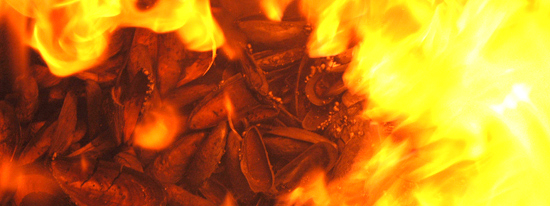
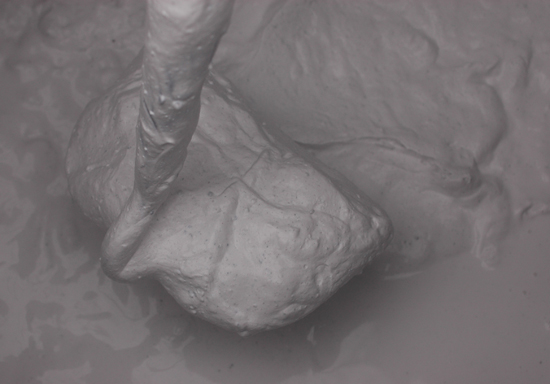

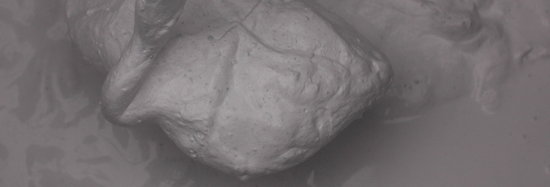


Lars
/ March 4, 2013Can you expand a little on the corn nixtimalization process? Nice writeup, thanks.
Matthew
/ March 5, 2013Thank you!
Stevene
/ March 6, 2013Hi Lars: I could, but tonia does it so much better in this excellent corn tortilla class handout! check it out. http://homescale.wordpress.com/corntortillas/
Lars
/ March 7, 2013Aha. Exactly what I was looking for. Thanks, Tonia.
Burton
/ August 18, 2013Thanks for the excellent introduction to the ways of lime! You answered so many of my questions in one clear concise post. I found a mislabeled picture under the last photo before the recap: “Beautiful creamy, chemically reactive quick lime keeps indefinitely under a thin layer of water.” Unless you put it there coyote style to see if we were paying attention. Thanks Teach!
Stevene
/ August 18, 2013Hey Burton, nice catch! It is confusing slinging around all those terms over and over. Fixed it.
burton smith
/ August 18, 2013Wow, instant gratification! Thanks! Your article answered some questions I’d been lugging around for ages.
Steve
/ October 14, 2014Nice write-up! I’m a bit late discovering it- but I just stumbled across it while trying to answer a nagging question.
Id like to know what information you have about the differences between quicklime that has been slaked into putty vs. quicklime that has been slaked into hydrated lime. Specifically, what makes the hydrated lime less reactive? Both limes have been slaked; one with excess water the other with a minimal amount of water… But how are the resulting limes chemically different? I understand that they are physically different (powder vs. putty). Also, am I correct in assuming that the different degrees of reactivity which you have assigned to these two slaked limes is in reference to their level of reactivity with atmospheric carbon?
Thanks so much
Stevene
/ October 14, 2014I’m not entirely confident that you should take my word for it, but I think, it is as simple as hydrated lime is exposed to CO2 in the air and begins to react. So, some of what would be calcium hydroxide is turned back into calcium carbonate, limestone. Therefore the lime is less reactive. Lime putty is never exposed to any significant CO2. If the quicklime is exposed to the air prior to slaking, it will begin to air slake and some of it can then go on to be limestone. That is why everyone is always very insistent that you use freshly slaked lime and slake as immediately as possible. I’ve tried to save quicklime before, and it will often (though strangely, not always) slake into a fine powder in storage over a period of time. As far as I know, that’s it. Regardless, lime snobs are very clear that lime slaked to powder is not at all the same in quality and functionality, and is mostly for adding to cement mortars to improve workability, which is still horrid. It must be incredibly bad without it! If you are planning on working with Lime much, definitely pick up a copy of Building With Lime. Good reads. People refer to lime mixed from type S lime as lime putty, but it is probably more appropriately called lime paste.
Steve
/ October 14, 2014Much of that is in line with my assumptions. A dry powder in a brown paper bag seems to have plenty of opportunity to begin reacting with the atmosphere.
I work most frequently with naturally *hydraulic* limes (NHL’s) in powdered form to produce lime mortars. But the topic of powdered hydrated limes has always been of interest to me- especially since they’re so frequently deemed as inferior to lime putties- even after being soaked into a ‘paste.’
I’ve had trouble imagining how a dry NHL, with its additional impurities aside, behaves any differently from a (non-hydraulic) hydrated lime once slaked, bagged, stored, etc,. Perhaps they are not different and their reactivity with atmospheric carbon is comparable. Perhaps the lime portion of a dry NHL powder is subjected to the same inferiority as the hydrated lime powders? I suspect that this weakness (if it is indeed inherent) is accepted in exchange for the benefits imbued in the usage of NHL’s for lime mortar.
Thanks so much for your time
Stevene
/ October 14, 2014I would think that NHL would have, or at least should have, a use-by date. If hydrated lime is assumed to just be added to an already very strong and reactive portland cement, it may just not matter that much. I would think a factor with NHL might be the strong influence of the other ingredients. Maybe the reactivity of those and the hardness would make up for some of the shortcomings of a stored lime. Maybe very fresh hydrated lime would be better than stuff that has been sitting out in a covered shed at the hardware store for months. If making your own though, there is little reason to make powdered hydrate. I think it’s largely a matter of convenience. I mean cement is similar to NHL I guess in that it is lime (presumably slaked?) with things added to cause a reaction and the hydraulic effect of curing with water rather than just air. Are you working with the St. Astier NHL? Does it come with a date code or anything? I’m kind of curious about how that works. I’ve thought about using the St. Astier to try a terrazzo floor. I’d rather try to add my own pozzolans to make a hydraulic lime, but it’s a whole extra project in itself to learn all about that.
Steve
/ October 15, 2014Yes, I think we’re on the same page- whatever properties a hydrated lime powder lacks in comparison to a lime putty is compensated for when coupled with the benefits of hydraulicity (in the case of NHLs).
And something that I’ve recently thought of; a naturally hydraulic lime *has* to be processed into a dry hydrate as slaking a NHL into a putty would, by nature, require its immediate use thus limiting its availability.
I have not uses St. Astier lime although I would like to. The data/technical information accompanied by that product is unsurpassed- and that degree of reassurance is alluring- as is the process of terrazzo flooring.
Steve
Stevene
/ October 15, 2014I wonder if NHL could be ground into a fine powder as quicklime and used hot. I think there might be some restrictions on selling quicklime. It is pretty dangerous stuff, especially in powdered form. I’m pretty intrigued by the terrazzo idea, but it is intimidating too. Only one chance to get it right!
0773984172
/ November 19, 2014hey it will be better if you represent lime cycle diagramatically
John
/ January 4, 2016‘Hi Stevene . I have a large quantity of slaked lime carbide lime just started drying it ready for screening what do you think I should market it as ?
debra
/ June 9, 2016hi i just discovered this article while googling the uses for type S lime. i live in a remote area and want to get some chalky texture lime to put on my lawn, over the fish meal i use for fertilizer in order to keep some of the flies down until it all gets absorbed or washed in by rainfall. but all i can buy locally seems to be type S lime, from a building supply store. i’m wondering if you could tell me whether or not this would work for what i’m wanting?
Stevene
/ June 9, 2016I think it would probably kill the grass. I think it is what they use to put lines on football fields.
Fred J.Nowicki
/ January 16, 2017The idea that a putty derived from a dry hydrated lime is not as good as a putty is highly debatable.While there are many camps that feel that way,there are also many others that believe the opposite. Here are some titles of papers written by very knowledgeable people in the field who think that. Margret Thompson “Why is Type S special,A Conservation Engineer View Of Lime Mortar,Gerard Lynch book title Brickwork,vol 1,.These are just some of the many articles written by professionals with the adequate credentials to weigh in on the topic.
Stevene
/ January 16, 2017Thanks, I’ll definitely check that stuff out. I didn’t even know there was a debate.